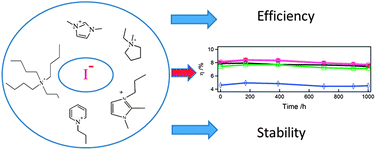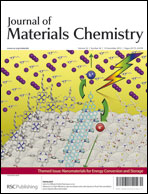Influence of cations of the electrolyte on the performance and stability of dye sensitized solar cells†
Abstract
The electrolyte is one of the key components for

- This article is part of the themed collection: Nanomaterials for Energy Conversion and Storage

 Please wait while we load your content...
Please wait while we load your content...